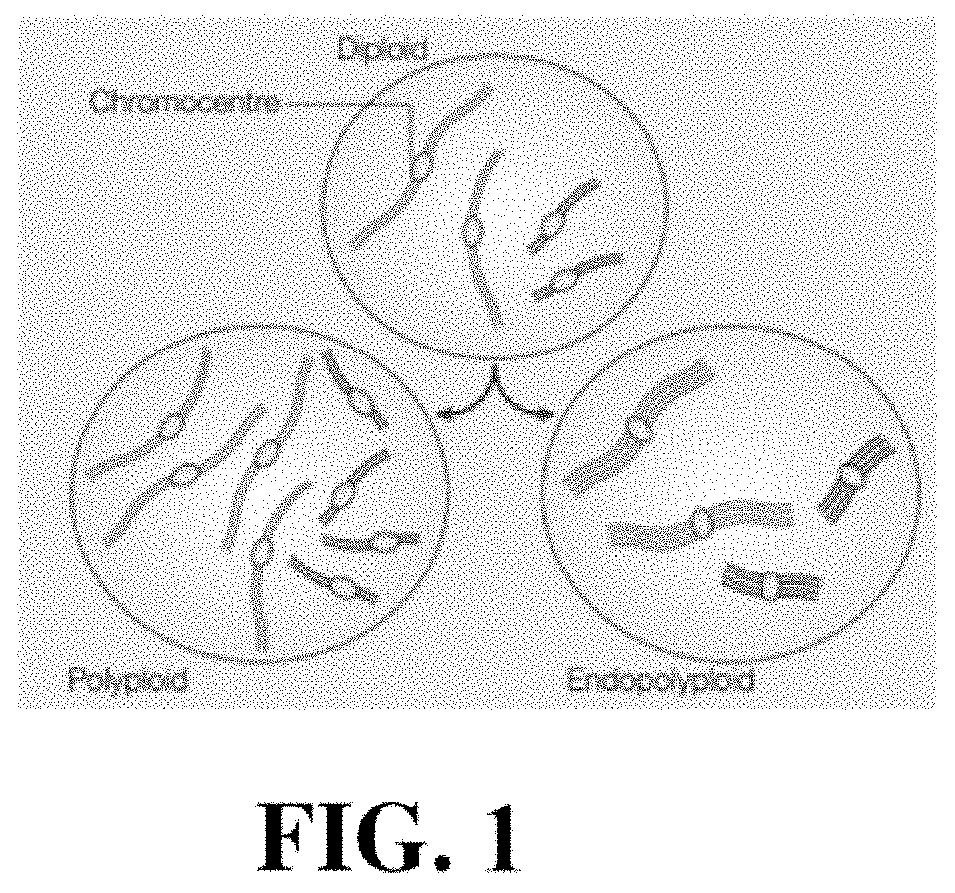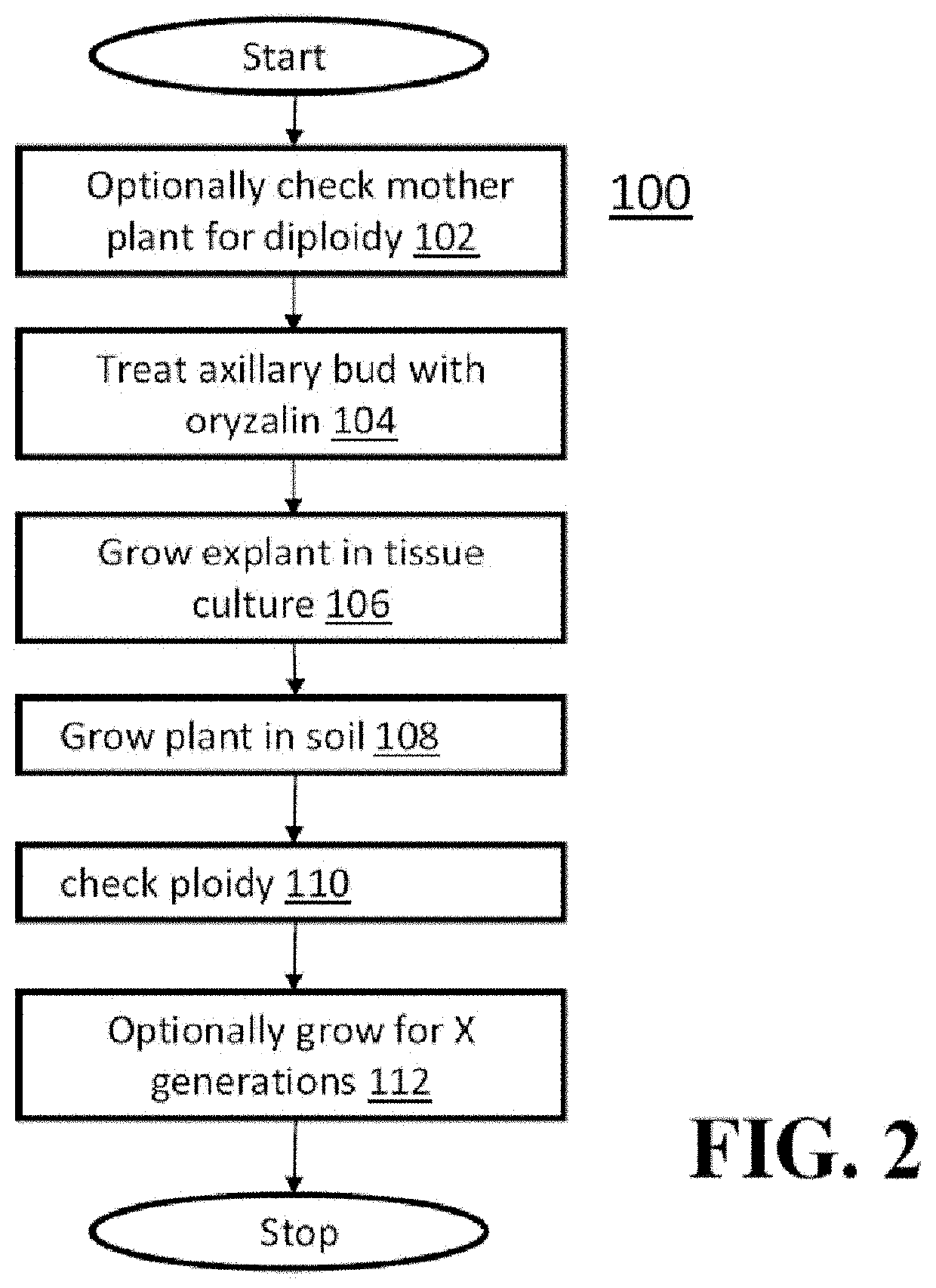Triploid cannabis plants and methods for generating same
a technology of triploid cannabis and cannabis seeds, applied in the field of triploid cannabis plants and seeds, can solve the problems of poor reproductive viability of plants, triploid plants are often seedless and sterile, and methods can be imprecis
- Summary
- Abstract
- Description
- Claims
- Application Information
AI Technical Summary
Benefits of technology
Problems solved by technology
Method used
Image
Examples
example 1
lyploid Strains for the Breeding of Triploid Cannabis Cultivars
[0119]Initial experiments are carried out with the Super Nordle® (first set of experiments) and Cannatonic® (second set of experiments) strains. In order to cross female diploids and tetraploids, female plants are induced to create male flowers using a silver thiosulphate spray, Four diploid plants and four tetraploid plants are treated as a comparison in the initial experiments, to confirm that pollenIseeds can be produced from both types of plants. Tetraploid plants are obtained as described herein and / or as described in International Patent Application No. PCT / CA2019 / 050332, filed Mar. 19, 2019. Tetraploids with induced male flowers are placed with six diploid females and vice versa, so that all seeds produced should be triploid. Two plants of the same ploidy are placed with the pollen donor plants as a control to compare seed set. Seeds are harvested from individual plants so that seed generation per plant can be cal...
example 2
Breeding for the Production of Seedless Cannabis
[0125]In order to maintain bud quality in growing environments where plants may be exposed to pollen contamination, tetraploid versions of both Palm Tree® CBD and Cannatonic® strains were created and were crossed with their respective diploid counterparts in order to create seedless triploid varieties. The Palm Tree® CBD maternal excess triploids show a 98.4% reduction in seed set when exposed to a pollen challenge, and otherwise show only minor differences in phenotype and chemotype. The few seeds which were obtained from the triploids had a very poor germination rate and produced small, malformed plants. The paternal excess triploids had very poor seed viability, and the plants were generally of poorer quality, with reduced plant health and bud yield.
[0126]Experiments were carried out with Palm Tree® CBD and Cannatonic®. To create tetraploids, axillary bud explants were treated with a solution of the mitotic spindle inhibitor oryzal...
PUM
 Login to View More
Login to View More Abstract
Description
Claims
Application Information
 Login to View More
Login to View More - R&D
- Intellectual Property
- Life Sciences
- Materials
- Tech Scout
- Unparalleled Data Quality
- Higher Quality Content
- 60% Fewer Hallucinations
Browse by: Latest US Patents, China's latest patents, Technical Efficacy Thesaurus, Application Domain, Technology Topic, Popular Technical Reports.
© 2025 PatSnap. All rights reserved.Legal|Privacy policy|Modern Slavery Act Transparency Statement|Sitemap|About US| Contact US: help@patsnap.com


